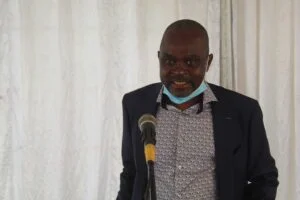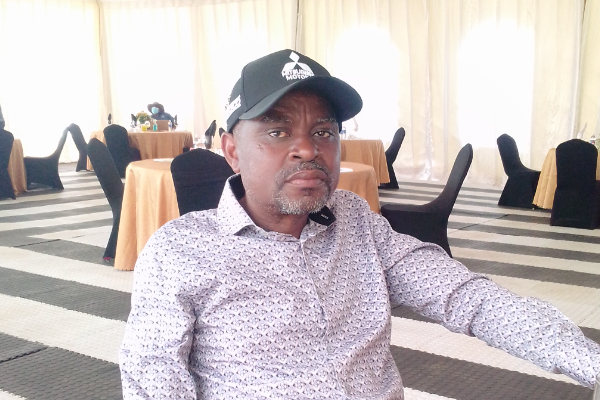Eliakem Hove, Freda Rebecca and Shamva mine boss – Interview
In August 2021 the Mining Zimbabwe team had a tour of Freda Rebecca gold mine the country’s biggest gold producer run by its Managing Director Mr Eliakem Hove. Hove doubles as Shamva mine Managing Director as well.
We couldn’t help but marvel at the smooth operations, monster machinery and best of all the visit to the “gold room” where gold is processed and smelted into gold bars. What an experience!
We had the privilege of interviewing the Freda Rebecca boss Mr Eliakem Hove a highly respected and prominent figure in the Zimbabwe Mining industry. The soft-spoken Hove gave us an insight into Freda Rebecca’s mining operations and his view of Zimbabwe’s mining industry. Here is how our interaction went.
KS: Thank you for having us Mr Hove, may you share a brief background of yourself.
Eliakem Hove: I am a Mining Engineer by profession with over 30 years in the Mining Industry encompassing senior operational, technical and production experience with various organizations. I am currently the Managing Director of Freda Rebecca and Shamva Gold Mines. I have a vested interest in team-building and personnel development.
KS: You are running one of the country’s biggest gold-producing companies. What is your working day like?
Eliakem Hove: It basically consists of a review of the previous week performance, Planning of the current week performance, Funding and Cashflow planning, Production momentum, Capital projects review, Critical stock review, Stakeholders’ in the tray.
KS: We understand that when Kuvimba Mining House took over Freda Rebecca Mine last year, the mine was producing about 150 kilogrammes of gold per month. Currently, how many kgs of gold are you producing per month?
Eliakem Hove: This financial year we have averaged 281kgs against an average budget of 248kgs. The highest performance was of course 311kg achieved in June.
KS: What is your 2021 target in terms of gold production?
Eliakem Hove: Our year runs from April to March. This current year is called FY2022 and it started last April. The target for FY2022 is 103,521Oz (3.22tons) which I am confident will be surpassed based on current performance.
KS: In terms of CAPEX, so far how much have you invested into the business?
Eliakem Hove: We have invested US$ 3.50 per ton milled in stay in business Capex (SIB). For FY 2020 -2021 we have invested over US$20m and the development Capex into Shamva and FRGM and we are looking forward to investing US$26m more this year and over US$180m into Shamva Hill project in the next 2 years.
KS: What are the major challenges are you facing as a mining company in Zimbabwe and how do you think those challenges could be solved?
Eliakem Hove: The main challenge we are facing is the cost creep that is coming through the discrepancy between the official ZWL: US rate and the alternate rate. Of course, our procurement strategy is to lean towards offshore procurement to mitigate this exchange risk but there are some local services and goods that we require as a mine. These are pegged at parallel rates most of the time as providers will be trying to mitigate the exchange risk.
The 60:40 split of proceeds is not favourable as the cost profile is dominated by offshore supply.
The impact of incremental incentives is yet to be implemented and the benefit for mature optimized mines will be minimal
Furthermore, limited access to forex auction by our service providers and contractors make it worse.
When we talk of changes we cannot afford not to mention the devilish Covid-19. Its effects are obvious. We have lost 2 employees already this current year.
Access to capital and the cost of capital has remained a challenge for the operation.

KS: Some mining companies in Zimbabwe have been decrying power challenges. Are you also facing similar challenges? If so, could you tell us how you have been affected?
Eliakem Hove: Yes we have not been spared. Despite being on a ring-fenced tariff agreement with ZESA that guarantees continuity of electrical supply, load shedding does occur but only when the utility supply is seriously suppressed. Our major power supply challenges are infrastructural because of ageing powerline infrastructure and equipment. We are losing 200 milling hours per month on average
KS: You recently dismissed the assertion that the resource left at Freda is less than five years! What are your expansion plans?
Eliakem Hove: It is true that FRGM has a remaining life of Mine of about 5 years and our thrust is to find its replacement. Organically, we have claims in the form of Alice, Topsman and Savoy that we anticipate spending money on for more information and confidence. We will also look at re-optimising the pit. Our anticipation is we will have a bigger pit. The exercise to assess that has already begun.
Outside our claims, we are open to synergies with other near mine ore sources. Already we have Shamva mine which is hauling its ore to Freda. We will also consider partnerships with other near mine producers.
KS: As a primary gold producer, how are you supporting small-scale miners in the country?
Eliakem Hove: There is no clear formal engagement framework yet. We offer technical support when approached and emergency services in response to distress. The biggest challenge that we face is the lack of organisation on the part of small-scale miners for us to offer significant support.
KS: We recently had a tour of your gold processing centre can you give our audience just a brief what happens in the hot room?
Eliakem Hove In the “Gold Room” – this where we acid digest gold loaded wire wool from the elution section, calcine “i.e. dry” them at high temperature to allow some partial oxidation of the wire wool. The calcined wire wool is then mixed with chemical fluxes that will allow the chemical removal of impurities when smelting at very high temperatures above 1200°C to give smelt gold bullion with a purity of between 65 to 85% gold.
KS: The 60/40 foreign retention seems to be a challenge on mine operations in Zimbabwe as operational costs are increasing. Any comments on that?
Eliakem Hove: The 60/40 split is not sustainable as the USD cost proportions are over 60%. Engagements for the removal of the 20% surrender portion for local Nostro payments are ongoing as suppliers are hedging against this loss through price escalation. The retention split strains capability to self-finance capital projects
KS: As Zimbabwe’s largest gold operating mine what’s your word of advice to those who say Zimbabwe is a bad investment destination?
Eliakem Hove: Zimbabwe is actually a good investment destination. It is the perception that requires changing to attract exploration and Greenfields investments. Opportunities to invest in brownfields, as well as existing operations, are available.
KS: What is Freda Rebecca doing to protect workers against COVID-19?
Eliakem Hove: Sound Covid-19 Management framework informed by WHO guidelines and MoHCCZ statutes are in place. We have established a Covid-19 screening centre which is currently busy with vaccinating employees and their dependents for free. To date, the clinic has vaccinated 1557 people. Of those, 699 have been fully vaccinated.
The mine has recruited additional nurses to screen employees at all our entry points. We have also put measures to maintain social distances when transporting employees, and the mine has had to hire 5 by 75-seater buses since the advent of the pandemic.
In addition to the Covid-19 screening centre, we also established a fully manned and fully equipped isolation centre for the positive cases.
KS: The world is going digital and in Zimbabwe, we seem to be lagging. How are you doing as a mining company on Digitalization?
Eliakem Hove: We are trying to keep pace with the world trends. Our meetings are now done online. The security system is largely digital. Most process controls have gone digital. Data analytics is now on a digital platform. In a nutshell, we are at an acceptable level of digitalization. Labour compliment on IT has recently increased to show our seriousness on digitalization.
KS: How is your safety record in 2021?
Eliakem Hove: The safety performance for the operation is good. For FY2022, we have had 25 incidents of which 17 are property and equipment damage largely because we are a mechanized mine and therefore, we have a high density of mobile equipment. Only 3 are lost-time injuries. Our goal is zero harm to people, equipment and the environment.
KS: Despite the Zimbabwe Gold Mining industry being a multi-billion dollar industry, we do not have young millionaires in the industry (or some keep it hush) what could be limiting the potential of young indigenous miners
Eliakem Hove: Equitable access to capital and resources has been a major challenge. The challenge has been taken and we should be seeing several upcoming young millionaires in future.
KS: Besides work what do you enjoy doing and family
Eliakem Hove: I’m an avid farmer specializing in poultry farming, piggery and free-range chickens.
END//





